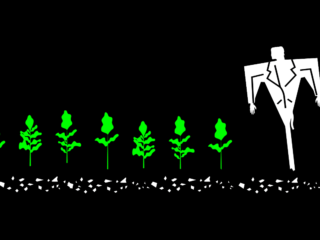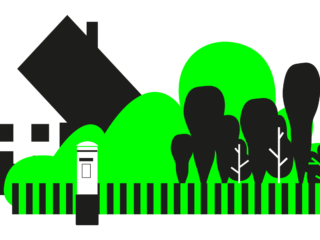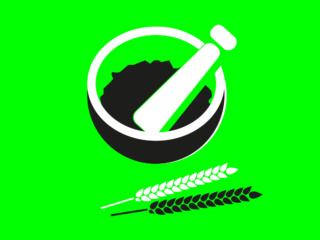Knowing how to save seed is an incredibly useful skill for veg gardeners. but for most of us it’ll only work if you start with what’s known as an “open-pollinated” plant. What’s that? We explain – and give you a brief guide to some of our favourite varieties

Ask any gardener who spent most of January in an online queue at a seed retailer: a combination of Covid-related staff shortages, Brexit-related import delays and restrictions, and the huge boom in lockdown gardening means that once again veg seeds are increasingly hard to get hold of. This is sadly frustrating when sowing season has started. Eager zombie gardeners want to get their tomatoes, peppers, onions and leeks under way; but without seed, that’s a no-no. Which means now is a good moment to think about seed-saving – aka, how to build your own supply and reduce your reliance on seed merchants.
Luckily nearly all the plants in a veg garden will, if you give them a chance, first flower, then create – or “set” – their own seed. Broccoli, for example: the bit you eat, the floret, is actually an immature flower head. French beans and mange tout are just edible seed pods — leave some on the plant to mature and they’ll fill with beans and peas that can you can keep to sow next year. Allow rooty things like onions, beetroots, parsnips and carrots to stay in the ground over winter, and come spring they will throw up long, flowering stalks capable of producing thousands of seeds.
Simples! Except, not completely. For obvious reasons, veg gardeners want their produce to be both reliably tasty and to react predictably to any particular set of growing conditions. But unless you are very up to speed on genetics, and have the time and space to breed and cross-breed veg plants purely to pollinate each other, the only way of achieving this is to save seed from what’s known as an open-pollinated (OP) variety of vegetable.
Why? Forgive the borderline unpronounceable word, but OP varieties are homozygous, which means their seed will grow into plants that look, crop and taste exactly the same as their parents. Unfortunately, many of the veg varieties you see on garden centre seed-racks are not OP, but – brace yourself for more shorthand – F1. This means they are the “first generation” offspring of parents from two different, genetically stable varieties of a veg plant, and they’re usually bred by seed specialists to have superior growing or eating qualities.
To show you what we mean, let’s imagine we have a particular variety of broccoli. Taking inspiration from one of the great Hollywood film-producing dynasties, we’ll call it “Albert (Cubby)” Broccoli, a variety known for making old-fashioned, sexually offensive James Bond movies. If “Cubby” Broccoli fertilizes a plant from a different variety – “Dana” Broccoli” say, which makes almost totally inoffensive children’s movies – their offspring will be F1 “Barbara” Broccoli. Because “Barbara” Broccoli is an F1 she combines some of the characteristics of both parents, in this case giving her the enhanced ability to produce modern, relatively inoffensive James Bond movies. (If, on the other hand, “Cubby” Broccoli fertilized another “Cubby” Broccoli, their open-pollinated offspring would also be “Cubby” Broccoli, and James Bond movies would still feature Sean Connery shagging a parade of women with dubious names.)
Given their useful characteristics, you can see why gardeners might like to grow F1 varieties. But for those of us who want to build our own seed supply, they’re no help. Because F1s don’t have genetically identical parents, they can’t produce what is known as “reliable” seed: it’ll be a mix of all sorts of genes, and the resulting plants will have all kinds of unpredictable qualities. Confused? Imagine a “Barbara” Broccoli plant fertilizes another “Barbara” Broccoli: because both plants have sets of genes from “Cubby” and “Dana” Broccoli, some seed might turn out “Barbara”, but a lot more of it will be weird mixes of Cubby, Dana and Barbara: “Cudanaba”, “Dabba” or “Barbary” Broccoli, say. Nobody wants to eat that. Or watch it make a movie.
It can be hard to work out from seed packets whether a variety is actually OP or not. OP seeds are sometimes marketed as “heirloom” or “heritage”, because many OP varieties have been grown by gardeners for decades, in some cases centuries. But it’s a grey area: not all the heritage varieties you’ll see are necessarily OP. And equally, not all OP varieties are necessarily heritage; some are former F1s that have only recently been dehybridized by breeders and are now considered stable. Some seed retailers, like The Real Seed Company, sell only OP varieties, from breeding lines they maintain themselves; others, like Victoriana Nursery, make it clear in their seed catalogue which veg are F1 and which aren’t. But more often, you’re on your own.
So to save you time and a whole lot of head-scratching, here’s our selection of tried-and-tested OP varieties of some staple zombie-garden veg. Because not everyone is lucky enough to have a big garden, or even access to a garden bed, we’ve suggested both varieties that are suitable for growing in open ground, along with others that will better suit containers. Either way, bear in mind that to keep the gene pool healthy, you should try to grow at least 20 or more specimens of any variety you want to save seed from. And in most cases, to stop cross-pollination you should only grow one OP variety of a particular vegetable at a time – we’ll say below if and when that isn’t a problem.
As for how to grow each of these veg, Chapter 5 of our most excellent book will give you blow-by-blow instructions. And for those of you unsure how to collect their seed once it’s set, or how to prepare and store it, we’ll put up a post later this year – by which time you should have got your new, open-pollinated and utterly reliable veg patch up and running. Happy seed-saving, peeps!
The Only Way is OP
Beetroot Red-rooted “Boltardy”, golden Boldor, and red and white striped “Chioggia” are all equally good in open ground and containers. Beetroot is wind-pollinated and will cross not just with other varieties of itself, but also Swiss chard, leaf beet and spinach, so either keep plants for seed-saving well separated and under cover, or only let one kind flower in any year.
Broad beans “Aquadulce Longpod” for open ground; “de Monica” for containers.
Cabbage Cabbages are generally too big to do well in containers, but for open ground we’d recommend “Durham Early”, “Piacenza” and “Greyhound”.
Carrots Long-rooted “Giant Red” or “Scarlet Nantes” for open ground or deep containers; small and round “Red Core Chantenay” or “Oxhella” for shallow containers.
French beans Of the climbing varieties, grow “Lingua di Fuoco” for pretty, red and white dried beans, or “Banette” for fresh green pods; for dwarf varieties, “Jacob’s Cattle” is good for golden-coloured dried beans, while “Aquilon” gives an early crop of green pods. All grow equally well in open ground and containers, though the climbers will need a tripod, trellis or similar to cling to. French beans mostly self-pollinate, so you can grow more than one OP variety at a time – though to be really sure your saved seed will be reliable, grow different varieties at least 10m apart.
Kale For open ground, “East Friesian Palm”, “Nero di Toscana” and “Dwarf Green Curled”; the latter two are smaller so will also work well in containers.
Onions For white onions, “Liria” or “Early Paris White”; for red onions try “Carmen”. Bulb onions are not always happy crowded in containers, so anyone without open ground might prefer to stick to growing spring onions (aka bunching onions or scallions), in which case use “White Lisbon”.
Parsnips “Hollow Crown” for open ground; “Suttons Student”, “Tender & True” and sturdy “Turga” for containers.
Peas For podding peas in open ground, “Ambassador” or “Alderman”; for open ground or containers, “Hurst Greenshaft” or “Douce Provence”. Other container possibilities include the very early podders “Havel” and “Charmette”, the sugarsnap “Cascadia” and the small mange tout “Norli”. Peas hardly ever cross-pollinate, which means you can save from more than one variety a year – a double bonus, as pea seed germinates much better when it’s fresh.
Pumpkins, courgettes and squash Despite the names, pumpkins “Atlantic Giant” and “Jack Be Little” both need space to sprawl, so will do best in open ground. Compact “Green Kuri” pumpkins, “Waltham Butternut” winter squash or “Tromboncino” summer squash or will work in large containers, as will the bush-type courgette “Verde di Milano”. But be aware: if you want reliable results, seed-saving for all of these is pretty complicated, and needs a whole post of its own. Which we’ll get round to at some point.
Runner beans For open ground, “Enorma Elite” or “Czar”. In containers, try the dwarf variety “Hestia”.
Sprouting broccoli “Early Purple” for open ground, “Late Purple” for open ground and/or containers.
Swiss chard “Fordhook Giant” or “Orange Oriole” for open ground, smaller “Rainbow” and “Ruby Red” for containers.
Tomatoes There are tons of OP varieties to choose from, with varieties to suit pretty much all situations, including the well-known “Gardener’s Delight” for medium-size cherry toms, and “San Marzano” plum toms for cooking with – both are vine tomatoes and will grow outdoors, but generally perform better in polytunnels or greenhouses. “Gartenperle” is a trailing tom you can grow outdoors in hanging baskets or tall containers. Toms are mostly self-pollinating, so don’t cross that easily – which means you can save the seeds of more than one variety each year. To be absolutely sure, use an old pair of tights as a bag to isolate trusses of about-to-open flowers, taking it off only once the fruits start to swell.
Turnips “Golden Ball” and “Purple Top Milan” do equally well in open ground or container

HOMOZYGOUS If you say a plant is homozygous, it means that its parents had identical genes. NB: couples who wear identical clothes are not homozygous; they’re just annoying.










